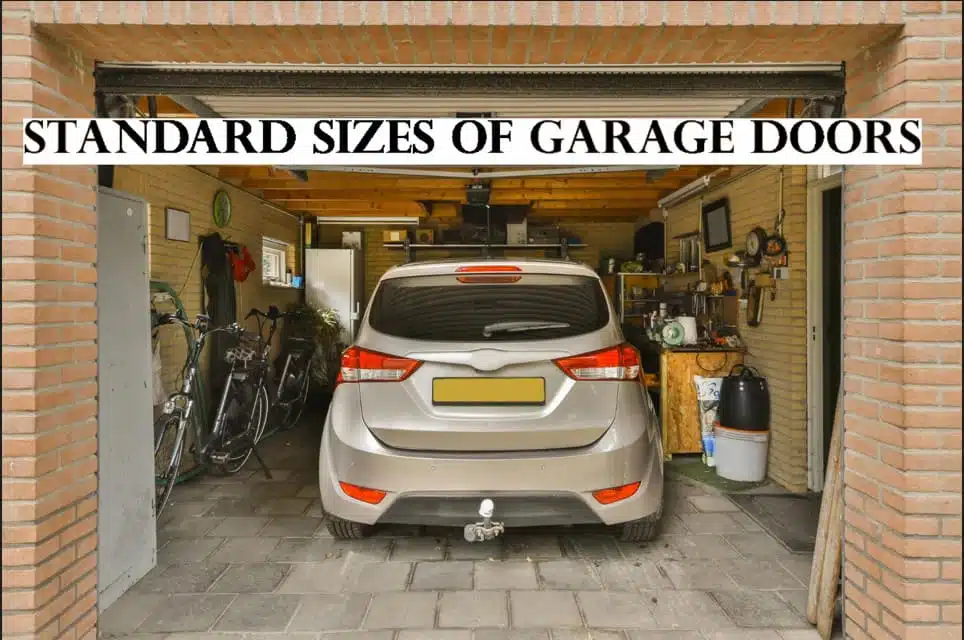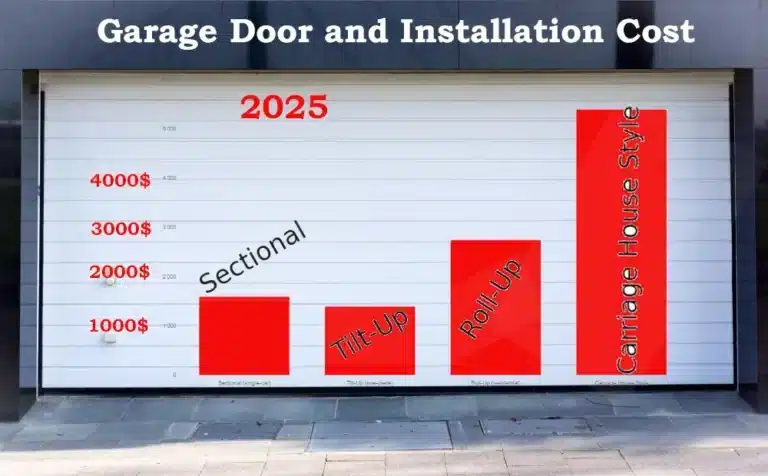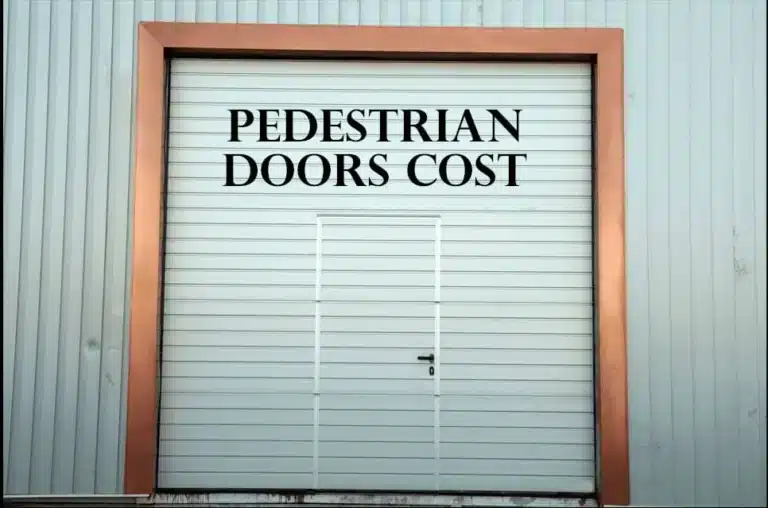When you’re thinking of adding or replacing a garage door, one of the first things you’ll hear about is “standard sizes of garage doors.” Now, I know what you’re thinking: Why bother with “standard”? Why not go custom? It might sound exciting to go with a custom door, but let me tell you—there are solid reasons to stick with standard garage door sizes. They’re affordable, reliable, and come in dimensions that work for almost every homeowner.
This guide will dive into everything you need to know about standard sizes of garage doors, why they’re a smart choice, the types available, and which size fits your needs best. So, buckle up, and let’s make this as straightforward as possible. By the end, you’ll know exactly what’s out there and feel confident in picking the best option for your garage setup.
What Does “Standard” Mean, Anyway?
When we talk about standard sizes of garage doors, think of it as the medium coffee in a world of endless coffee sizes. It’s not too big, not too small, just right for most homes. Standard garage door sizes follow industry norms, making them easy to find, simple to install, and, most importantly, affordable.
Garage doors come in standard sizes based on the kind of vehicle you’re parking inside. Got a compact car? No problem, there’s a standard size for that. Parking an SUV or two? A standard double-car garage door has you covered. If you’ve got an RV, oversized options are available too. So, let’s break down what those standard sizes look like.
Why Stick with Standard Sizes?
If you’re wondering why people stick to standard sizes of garage doors, here are some solid reasons:
- Cost Efficiency: Custom-sized doors come with a price tag. Standard sizes are mass-produced, making them way more affordable than custom jobs. Builders and manufacturers know the typical measurements most homes require, so they produce these doors at a lower cost.
- Quick Availability: Ever ordered something custom and had to wait forever? Not with a standard size garage door. They’re typically in stock and ready to go, meaning you can install it sooner. Need a quick replacement? Standard sizes are easier to source on short notice.
- Easy Installation: Since they’re made to fit typical garage openings, standard garage door sizes are straightforward to install. Less work, fewer adjustments, and fewer installation headaches mean that contractors can finish the job faster.
- More Options in Style and Material: Standard garage door sizes don’t limit your style. Whether you want a rustic wood finish, a sleek steel look, or modern glass, these options come in all the standard sizes.
Exploring the Standard Sizes of Garage Doors
So, what exactly are these standard sizes of garage doors everyone’s talking about? Standard sizes vary depending on whether you’re looking at a single-car, double-car, or oversized/RV door. Let’s break each one down with specific measurements and the types of garages they’re best suited for.
Single-Car Garage Door Sizes
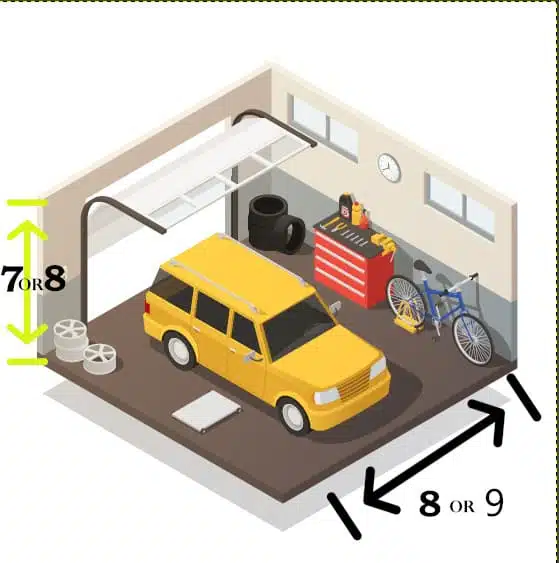
A single-car garage door is, as the name implies, designed for a single vehicle. These doors work well for compact cars, sedans, or small SUVs. They’re usually more affordable due to their smaller size, and they’re a common choice for homes with limited space.
Here are the standard sizes for single-car garage doors:
- Width: 8 feet or 9 feet wide
- Height: 7 feet or 8 feet high
A door that’s 8 feet wide is suitable for most compact cars and sedans. The 9-foot width provides a bit more room and might feel less cramped, especially if you have a larger vehicle or just want extra space to maneuver. As for height, 7 feet is typical, but some homeowners opt for an 8-foot door for more clearance—especially if they have a larger vehicle.
Benefits of a Single-Car Garage Door
- Affordable: Smaller doors mean lower material and labor costs.
- Space-Saving: Ideal for smaller homes or garages with limited space.
- Quick Installation: Because of their smaller size, single-car garage doors are quicker and easier to install.
Double-Car Garage Door Sizes
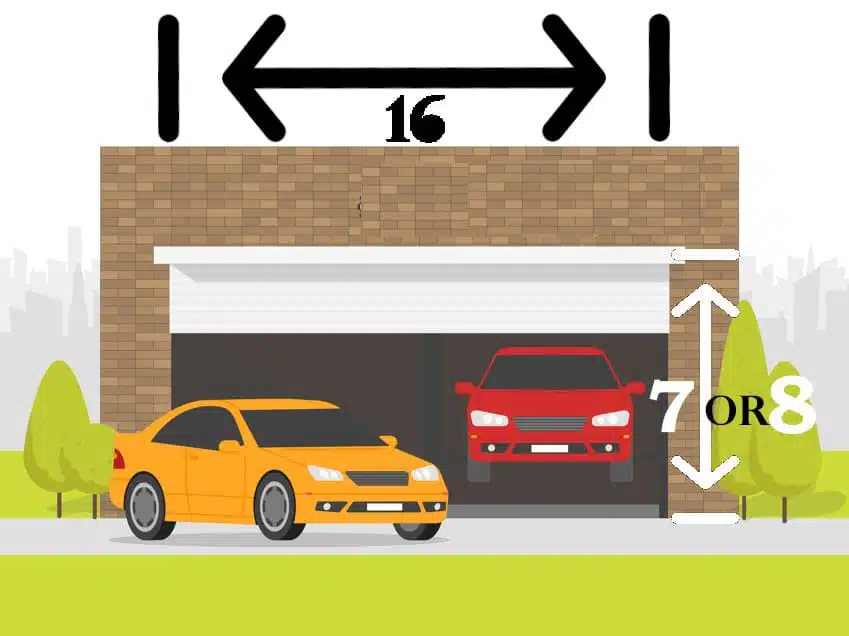
If you’re one of those households with two vehicles, you’ll need a double-car garage door. These doors span a wider opening, letting two cars park side-by-side without a divider. It’s also an excellent option if you use your garage for more than just parking—like storing bikes, tools, or other gear.
Here’s what you’ll typically find with double-car garage doors:
- Width: 16 feet wide
- Height: 7 feet or 8 feet high
A 16-foot-wide door accommodates two standard-sized vehicles side-by-side. The 7- to 8-foot height remains standard here as well, with 7 feet being the norm and 8 feet providing extra headroom. Double-car garages are often the most popular setup in suburban areas.
Benefits of a Double-Car Garage Door
- Convenience: A single, large door is more convenient than having two separate single doors.
- Ample Space: Perfect for households with multiple vehicles or for anyone who needs more storage.
- Enhanced Curb Appeal: Many find the wider double-door look more aesthetically pleasing.
Oversized/RV Garage Door Sizes
For those with unique needs, like storing an RV, boat, or other large vehicle, there are oversized or RV garage doors. These provide additional height and width, making them ideal for vehicles that wouldn’t fit through standard doors.
The standard sizes of garage doors for RVs and oversized vehicles typically include:
- Width: 10 feet to 12 feet wide
- Height: 12 feet to 14 feet high
An oversized garage door allows for the extra height and width you’ll need to get your RV in and out without scraping the top or sides. These doors are less common but essential for people who have larger-than-average vehicles.
Benefits of an Oversized/RV Garage Door
- Maximum Clearance: Taller and wider to accommodate larger vehicles with ease.
- Flexibility: If you don’t always park an RV, the extra space is fantastic for tall shelves or overhead storage.
- Increased Property Value: Adds versatility to your garage, which can be a valuable asset if you ever decide to sell.
| Common Garage Door Heights | Common Garage Door Widths | |
| Single Garage Doors | 7 or 8 feet | 8, 9, or 10 feet |
| Double Garage Doors | 7 or 8 feet | 16 or 18 feet |
| RV Garage Doors | 10, 12, or 14 feet | 10, 12, or 14 feet |
Why Standard Sizes of Garage Doors Make Sense
Imagine ordering a custom-size door, only to find out it’ll take twice as long to deliver and costs way more than you planned. That’s where standard garage door sizes come in to save the day. They offer practicality without the hassle.
Can I Customize Within Standard Sizes?
Absolutely! Just because you’re going with a standard size doesn’t mean you’re limited in style or features. Many standard-sized doors offer customization options, allowing you to choose:
- Materials: Wood, steel, aluminum, glass, and more.
- Insulation Levels: Add insulation to keep your garage more energy-efficient.
- Color and Finish: Whether you want a sleek, modern black or a classic wood grain, the choice is yours.
- Windows: Add windows for a touch of elegance and to let in natural light.
So, even with a standard size, you can personalize your garage door to suit your home’s aesthetic and functional needs.
Wrapping Up: Standard Garage Door Sizes Are All You Need
Choosing standard sizes of garage doors means you get a reliable, affordable, and quick solution without sacrificing quality or style. Whether you’re protecting a compact car, two SUVs, or even an RV, these standard dimensions have you covered.
Here’s a quick recap:
- Single-Car Garage Doors: Typically 8 or 9 feet wide, 7 or 8 feet high. Great for single vehicles.
- Double-Car Garage Doors: Usually 16 feet wide, 7 or 8 feet high. Ideal for households with two cars or extra storage.
- Oversized/RV Garage Doors: Between 10 and 12 feet wide, with a height of 12 to 14 feet. Perfect for oversized vehicles or added storage space.
Next time you’re in the market for a garage door, remember: standard sizes of garage doors are not just a shortcut. They’re a smart, practical choice that can meet almost any homeowner’s needs. With options for custom finishes, materials, and added features, a standard-size garage door could be everything you’re looking for without the fuss.
By choosing a standard size of garage door, you get the best of both worlds: flexibility in design with affordability and convenience. So, whether you’re just starting your home improvement journey or replacing an older door, keep these standard sizes of garage doors in mind. It might just be the perfect fit—literally!

